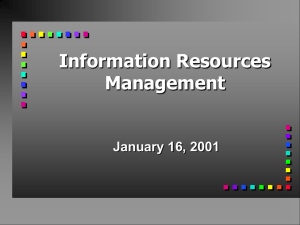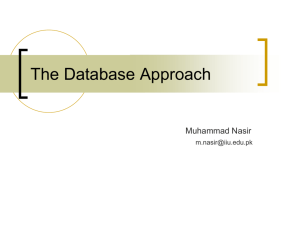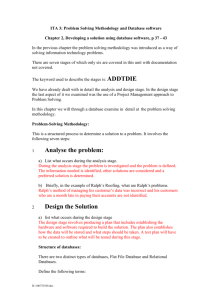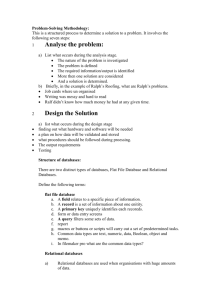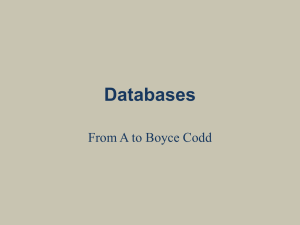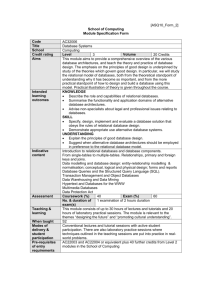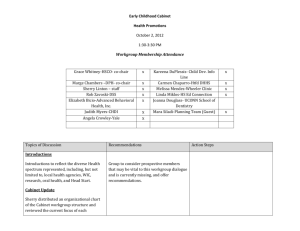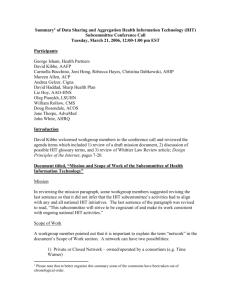WebCT Assignment #1 1. Which is not a disadvantage of traditional
advertisement
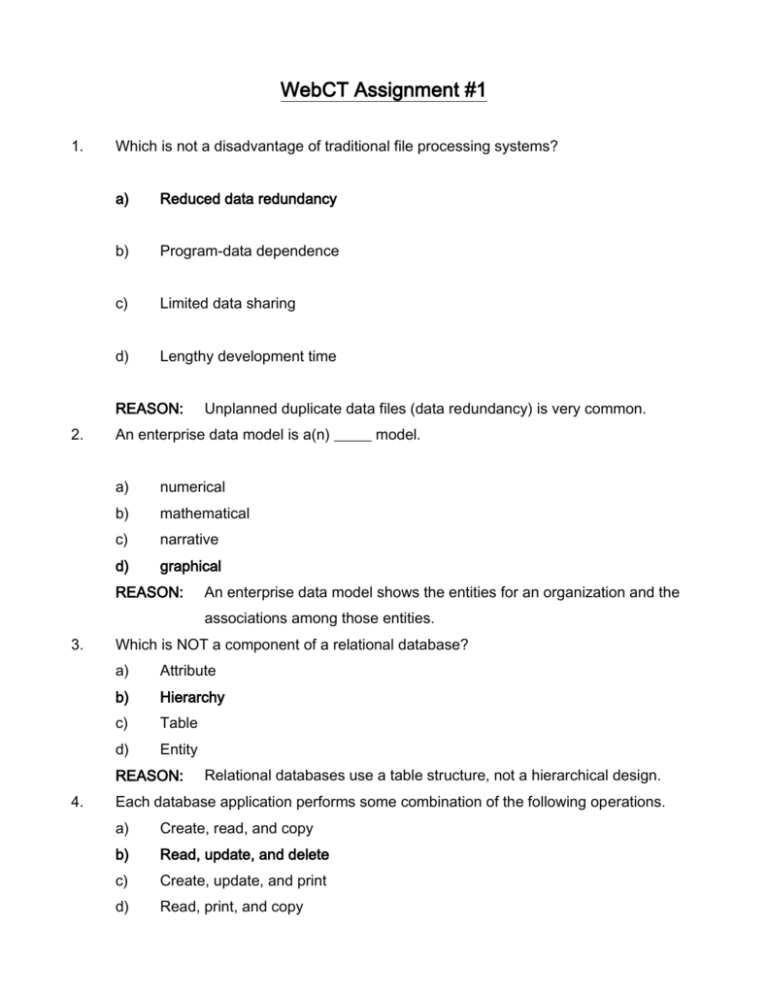
WebCT Assignment #1 1. Which is not a disadvantage of traditional file processing systems? a) Reduced data redundancy b) Program-data dependence c) Limited data sharing d) Lengthy development time REASON: 2. Unplanned duplicate data files (data redundancy) is very common. An enterprise data model is a(n) _____ model. a) numerical b) mathematical c) narrative d) graphical REASON: An enterprise data model shows the entities for an organization and the associations among those entities. 3. Which is NOT a component of a relational database? a) Attribute b) Hierarchy c) Table d) Entity REASON: 4. Relational databases use a table structure, not a hierarchical design. Each database application performs some combination of the following operations. a) Create, read, and copy b) Read, update, and delete c) Create, update, and print d) Read, print, and copy REASON: Some combination of read, update, delete, and create are included in database applications. 5. Database applications can be divided into five categories. Which is NOT a database application category? a) Relational b) Department c) Personal d) Enterprise REASON: Database application categories include personal, workgroup, department, enterprise, and Internet, Intranet and extranet. 6. A database that supports organization-wide operations and decision making is a(n) _____ database. a) department b) enterprise c) workgroup d) extranet REASON: 7. An organization may have several enterprise databases. Which type of database application does NOT typically use client/server architecture? a) Workgroup b) Personal c) Department d) Enterprise REASON: Typically personal database applications use desktop/laptop computer or PDA architecture. 8. Which is NOT an advantage of the database approach? a) Limited data sharing b) Improved data quality c) Reduced program maintenance d) Minimal data redundancy REASON: 9. A database is designed to maximize corporate resource sharing. Organizations that rely on traditional file processing systems may devote as much as 80% of their total information systems budget to program maintenance. a) True b) False REASON: 10. The lines in an E-R diagram represent entities a) True b) False REASON: 11. This leaves little time for developing new applications. The boxes represent the entities; the lines represent relationships. A separate database containing historical and summarized information is called an OLAP. a) True b) False REASON: A data warehouse or data mart contains historical and summarized information and can be analyzed using OLAP (on-line analytical processing) tools. 12. A PDA or laptop computer will likely contain a workgroup database. a) True b) False REASON: 13. Personal databases are used on a PDA or a laptop computer. Personnel, marketing, manufacturing, and accounting are all examples of workgroups and use workgroup databases. a) True b) False REASON: A department is a functional unit within an organization, such as personnel, marketing, manufacturing, and accounting and use a department database. 14. Legacy data is data contained by a previously used system. a) True b) False REASON: 15. This historical data should be included in a data warehouse for analysis. The most recent change affecting the database environment is the introduction of ERP systems. a) True b) False REASON: Acceptance of the Internet by businesses has resulted in important changes in business models and data needs. 16. DATA and INFORMATION are indistinguishable terms. a) True b) False REASON: 17. Database development begins with _____, which establishes the range and general contents of 18. Information is data that has been processed. organizational databases. a) Enterprise data modeling b) Cross-functional analysis c) Departmental data modeling d) Database design The first step in database development, in which the scope and content is specified, is called a) Information systems architecture b) Enterprise data modeling c) Information engineering d) Strategic planning factors REASON: 19. Its purpose is to create an overall picture of organizational data. A planning matrix that identifies which data are captured, used, updated, or deleted within each business function is called a ______ matrix. 20. a) Information system-to-objective b) Supporting function-to-entity c) Creation-deletion-ratio d) Location-to-location A conceptual schema defines the whole database without reference to how the data are stored. a) True b) False REASON: Usually a conceptual schema is depicted in a graphical format.
